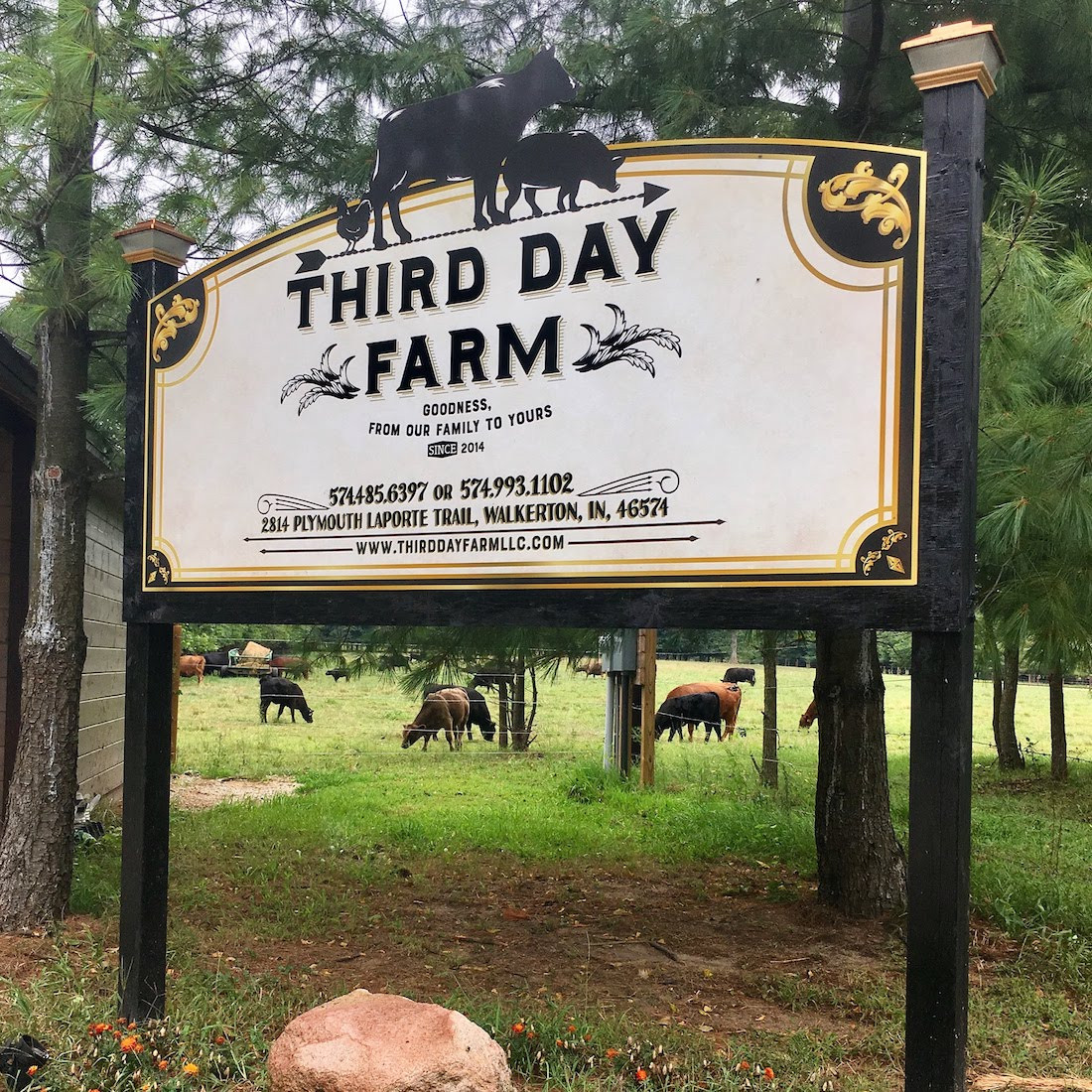What is Rotational Grazing?
posted on
April 29, 2022
Spring has come, trees are budding, flowers are blooming, and the grass is growing! Hallelujah!
This mean things will be moooving soon! (see what I did there?)
All animals have been in their winter pastures for the past several months. We are literally chomping at the bit to get our livestock moving through all the pastures again VERY soon! They're still eating hay (harvested from our grounds) while they wait. The whole aspect of "stewarding the land" is something that we strongly believe in. The more I, personally, have learned about the importance of rotating animals through pastures and the health it offers the animal, the consumer, AND the land has left me more in awe of creation and God's design for the land, animals, and our bodies.

So let's talk about it...
What is rotational grazing?
Rotational grazing is when a large pasture is separated out into smaller portions (referred to as 'paddocks') allowing animals to graze one portion at a time. While livestock graze one portion, the other areas rests and regenerates.
Why do we use rotational grazing?
Rotational grazing is a regenerative farming method that not only is beneficial for the animals and the consumer, but also is one important way to maintain the health of the soil. This method helps animals get the nutrients they need while also healing the land. In short- rotational grazing helps decrease the wear on the land. It also evenly distributes the manure, which acts as a natural fertilizer, and helps create nutrient dense soil. Nutrient dense soil creates happy, healthy grazers that, in turn, produces meat that is also more nutrient dense. See the pattern?
What does this look like at Third Day Farm?
During the warmer months, our animals are all rotated through paddocks to graze and forage. Each species on our farm (sheep, goats, cattle, pigs, and chickens) graze and forage for specific types of plants. Having our our livestock run the same paddock can be helpful as pasture management. Cattle tend to prefer grasses while sheep seek out weeds. Goats enjoy browse, which includes brushes, shrubs, trees, brambles, and vines. Each species also prefers to eat at a different level. Goats like to reach as high as possible often standing on their hind legs to reach for tree limbs. Cattle prefer to graze moderately high forage while sheep prefer to graze closer to the ground. In fact, when the multi-species are used in conjunction, they can actually produce quite an effective pasture management plan. I guess it can be said, "One ruminant's trash is another ruminant's treasure." :)
What challenges arise with rotational grazing?
Keeping an eye on how quickly the livestock is eating down the paddock is important. When cattle see that "the grass is greener (or longer, in this case) on the other side they're ready to move on and will make a moo'ing ruckus to let you know they're ready to be moved along. Rotational grazing requires much more land than alternatives methods. It also requires the daily task of moving fences. Our sheep can be rotated by themselves, but definitely are more susceptible to predators when they are alone. They have no defense mechanism against coyotes or other predators in the area, therefore keeping them with the cattle or having trusted livestock guardian dogs or donkeys to help ward off unwanted guests. Goats can be rotated along with the cattle and sheep, however goats do not respect fencing that can work for cattle and sheep. Goats have personalities that are looking for adventure and will find a way out if there is one ;)

There is a quick rundown on rotational grazing and how we use this regenerative farming method on our farm to benefit the animals, the land, and the consumer. Our mission is to steward the land and animals in a God-honoring way and this feels like one way we can achieve that!
Thanks for tuning in!
Brittany




